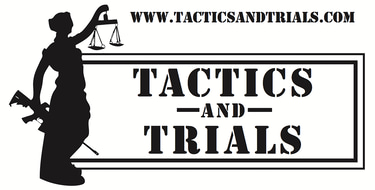Who Controls the National Guard? A Legal Breakdown of Federal vs State Authority
In times of civil unrest or national emergency, who has the final say over the National Guard—the Governor or the President? This post breaks down the complex legal framework behind Title 10, Title 32, and the Insurrection Act.
8/4/20252 min read
In light of recent unrest in California and the federal activation of National Guard troops, the age-old legal question has resurfaced: Who actually controls the National Guard? The answer isn’t simple—and depends on a dual legal framework rooted in U.S. law.
A Historical Foundation
The California National Guard traces its roots to 1850, when the state formally organized its own militia. By the Civil War, over 20 militia companies operated in cities like San Francisco. Over the years, this force evolved into what we now call the Cal Guard, a hybrid military entity with both state and federal responsibilities.
The National Defense Act of 1916, followed by amendments in 1920 and 1933, further integrated the Guard into the federal military structure. This created the “dual-status” authority we still use today.
Title 32 vs Title 10 – The Legal Divide
The Guard operates under two main federal statutes:
Title 32 – The Governor controls the Guard using federal funding. Soldiers remain under state authority and are not subject to federal restrictions like the Posse Comitatus Act. This allows them to support civil authorities during emergencies, riots, and disasters.
Title 10 – The Guard is federalized and placed under the authority of the President. At this point, troops can be deployed nationwide or even abroad. When under Title 10, they are considered part of the U.S. military and cannot engage in domestic law enforcement unless explicitly authorized by statute (e.g., Insurrection Act).
The Insurrection Act & Martial Law
Codified under Title 10 U.S. Code Chapter 13, the Insurrection Act allows the President to deploy troops domestically under specific conditions:
Section 251: With a state’s request
Section 252: Without request, if law enforcement is obstructed
Section 253: To enforce constitutional rights during domestic unrest
In contrast, Martial Law isn’t clearly defined in U.S. law, but generally refers to a military takeover of civil government functions—something only invoked in extreme, rare circumstances.
The 2025 California Controversy
In June 2025, President Trump federalized up to 4,000 California Guard troops in response to immigration-related protests. Governor Gavin Newsom objected, citing state sovereignty and potential violations of the Posse Comitatus Act and Tenth Amendment.
The federal courts upheld the President’s authority under Title 10 Section 12406, reinforcing the power of the executive branch to override state objections during national emergencies.
Why This Matters
For law enforcement professionals, attorneys, and informed citizens, understanding the legal levers behind Guard deployment is critical. The tension between state and federal power isn’t theoretical—it plays out in real time during protests, natural disasters, and even public health crises.
Whether you're patrolling the streets, defending a client, or shaping policy, a strong legal grasp of the Guard’s framework helps decode one of the most powerful yet misunderstood tools in American governance.
Final Thought
The next time you see uniformed Guard troops on your streets, ask not just what they're doing—but under whose authority they stand.
📘 Want more legal briefings like this? Subscribe to TacticsAndTrials.com and follow us on YouTube for weekly breakdowns.

